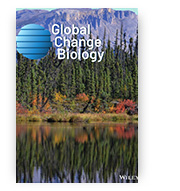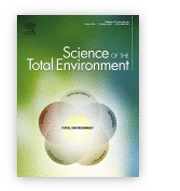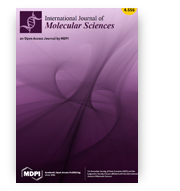Response of the peatland carbon dioxide sink function to future climate change scenarios and water level management
Salimi Shokoufeh, Martin Berggren, Miklas Scholz
Global Change Biology
 Stress factors such as climate change and drought may switch the role of temperate peatlands from carbon dioxide (CO2) sinks to sources, leading to positive feedback to global climate change. Water level management has been regarded as an important climate change mitigation strategy as it can sustain the natural net CO2 sink function of a peatland. Little is known about how resilient peatlands are in the face of future climate change scenarios, as well as how effectively water level management can sustain the CO2 sink function to mitigate global warming. The authors assess the effect of climate change on CO2 exchange of south Swedish temperate peatlands, which were either unmanaged or subject to water level regulation. Climate chamber simulations were conducted using experimental peatland mesocosms exposed to current and future representative concentration pathway (RCP) climate scenarios (RCP 2.6, 4.5 and 8.5). The results showed that all managed and unmanaged systems under future climate scenarios could serve as CO2 sinks throughout the experimental period. However, the 2018 extreme drought caused the unmanaged mesocosms under the RCP 4.5 and RCP 8.5 switch from a net CO2 sink to a source during summer. Surprisingly, the unmanaged mesocosms under RCP 2.6 benefited from the warmer climate, and served as the best sink among the other unmanaged systems. Water level management had the greatest effect on the CO2 sink function under RCP 8.5 and RCP 4.5, which improved their CO2 sink capability up to six and two times, respectively. Under the current climate scenario, water level management had a negative effect on the CO2 sink function, and it had almost no effect under RCP 2.6. Therefore, the researchers conclude that water level management is necessary for RCP 8.5, beneficial for RCP 4.5 and unimportant for RCP 2.6 and the current climate.
Stress factors such as climate change and drought may switch the role of temperate peatlands from carbon dioxide (CO2) sinks to sources, leading to positive feedback to global climate change. Water level management has been regarded as an important climate change mitigation strategy as it can sustain the natural net CO2 sink function of a peatland. Little is known about how resilient peatlands are in the face of future climate change scenarios, as well as how effectively water level management can sustain the CO2 sink function to mitigate global warming. The authors assess the effect of climate change on CO2 exchange of south Swedish temperate peatlands, which were either unmanaged or subject to water level regulation. Climate chamber simulations were conducted using experimental peatland mesocosms exposed to current and future representative concentration pathway (RCP) climate scenarios (RCP 2.6, 4.5 and 8.5). The results showed that all managed and unmanaged systems under future climate scenarios could serve as CO2 sinks throughout the experimental period. However, the 2018 extreme drought caused the unmanaged mesocosms under the RCP 4.5 and RCP 8.5 switch from a net CO2 sink to a source during summer. Surprisingly, the unmanaged mesocosms under RCP 2.6 benefited from the warmer climate, and served as the best sink among the other unmanaged systems. Water level management had the greatest effect on the CO2 sink function under RCP 8.5 and RCP 4.5, which improved their CO2 sink capability up to six and two times, respectively. Under the current climate scenario, water level management had a negative effect on the CO2 sink function, and it had almost no effect under RCP 2.6. Therefore, the researchers conclude that water level management is necessary for RCP 8.5, beneficial for RCP 4.5 and unimportant for RCP 2.6 and the current climate.
DOI:10.1111/gcb.15753
The impact of global warming on the niches and pollinator availability of sexually deceptive orchid with a single pollen vector
Marta Kolanowska, Ewa Michalska, Kamil Konowalik
Science of the Total Environment
 Orchidaceae are among the most endangered plants in the world. Considering the sensitive nature of pollinator-plant relationship the most vulnerable are species which are dependent on a single pollen vector. In this paper the future distribution of suitable niches of Australian sexually deceptive orchid Leporella fimbriata and its pollinator (Myrmecia urens) was estimated using three machine learning algorithms. While the potential range of fringed hare orchid depending on modelling method will be larger or slightly reduced than currently observed, the ant will face significant loss of suitable niches. As a result of global warming the overlap of orchid and its only pollen vector will most probably decrease. The unavailability of pollen vector will lead to decreased reproductive success and as a result it will be a great threat for L. fimbriata existence.
Orchidaceae are among the most endangered plants in the world. Considering the sensitive nature of pollinator-plant relationship the most vulnerable are species which are dependent on a single pollen vector. In this paper the future distribution of suitable niches of Australian sexually deceptive orchid Leporella fimbriata and its pollinator (Myrmecia urens) was estimated using three machine learning algorithms. While the potential range of fringed hare orchid depending on modelling method will be larger or slightly reduced than currently observed, the ant will face significant loss of suitable niches. As a result of global warming the overlap of orchid and its only pollen vector will most probably decrease. The unavailability of pollen vector will lead to decreased reproductive success and as a result it will be a great threat for L. fimbriata existence.
DOI:10.1016/j.scitotenv.2021.148850
Cytotoxicity Study of UV-Laser-Irradiated PLLA Surfaces Subjected to Bio-Ceramisation: A New Way towards Implant Surface Modification
Konrad Szustakiewicz, Bartłomiej Kryszak, Paulina Dzienny , Błażej Poźniak, Marta Tikhomirov, Viktoria Hoppe, Patrycja Szymczyk-Ziółkowska, Włodzimierz Tylus, Michał Grzymajło, Agnieszka Gadomska-Gajadhur, Arkadiusz Antończak
International Journal of Molecular Sciences
 In this research we subjected samples of poly(L-lactide) (PLLA) extruded film to ultraviolet (193 nm ArF excimer laser) radiation below the ablation threshold. The modified film was immersed in Simulated Body Fluid (SBF) at 37 °C for 1 day or 7 days to obtain a layer of apatite ceramic (CaP) coating on the modified PLLA surface. The samples were characterized by means of optical profilometry, which indicated an increase in average roughness (Ra) from 25 nm for the unmodified PLLA to over 580 nm for irradiated PLLA incubated in SBF for 1 day. At the same time, the water contact angle decreased from 78° for neat PLLA to 35° for irradiated PLLA incubated in SBF, which suggests its higher hydrophilicity. The obtained materials were investigated by means of cell response fibroblasts (3T3) and macrophage-like cells (RAW 264.7). Properties of the obtained composites were compared to the unmodified PLLA film as well as to the UV-laser irradiated PLLA. The activation of the PLLA surface by laser irradiation led to a distinct increase in cytotoxicity, while the treatment with SBF and the deposition of apatite ceramic had only a limited preventive effect on this harmful impact and depended on the cell type. Fibroblasts were found to have good tolerance for the irradiated and ceramic-covered PLLA, but macrophages seem to interact with the substrate leading to the release of cytotoxic products.
In this research we subjected samples of poly(L-lactide) (PLLA) extruded film to ultraviolet (193 nm ArF excimer laser) radiation below the ablation threshold. The modified film was immersed in Simulated Body Fluid (SBF) at 37 °C for 1 day or 7 days to obtain a layer of apatite ceramic (CaP) coating on the modified PLLA surface. The samples were characterized by means of optical profilometry, which indicated an increase in average roughness (Ra) from 25 nm for the unmodified PLLA to over 580 nm for irradiated PLLA incubated in SBF for 1 day. At the same time, the water contact angle decreased from 78° for neat PLLA to 35° for irradiated PLLA incubated in SBF, which suggests its higher hydrophilicity. The obtained materials were investigated by means of cell response fibroblasts (3T3) and macrophage-like cells (RAW 264.7). Properties of the obtained composites were compared to the unmodified PLLA film as well as to the UV-laser irradiated PLLA. The activation of the PLLA surface by laser irradiation led to a distinct increase in cytotoxicity, while the treatment with SBF and the deposition of apatite ceramic had only a limited preventive effect on this harmful impact and depended on the cell type. Fibroblasts were found to have good tolerance for the irradiated and ceramic-covered PLLA, but macrophages seem to interact with the substrate leading to the release of cytotoxic products.
DOI:10.3390/ijms22168436









